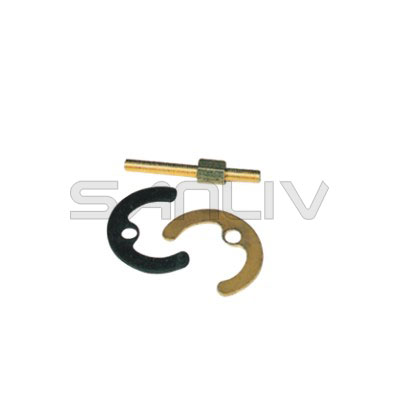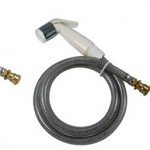How to Install a Bathroom Basin Faucet? Read our bathroom faucet installation & bathroom sink faucet replacement tips online. A bathroom faucet, also referred to as a lavatory faucet or basin faucet. You can save a lot of money by installing a new bathroom fixture yourself.
IMPORTANTE: Read this before you start
- When replacing an old faucet there are generally three things to consider: how many holes your sink has, how far apart they are, and whether or not you will need to replace the drain.
- Most bathroom sinks usually come with three different hole configurations. The most popular configuration is two holes four inches apart on center with a center hole between them (three holes total). Another similar configuration is two holes eight inches apart on center with a center hole between them (often called a spread set configuration). Finalmente, there might be just a single hole, which is a common configuration for newer sinks and faucets.
- You will need to purchase a faucet that matches your particular hole pattern. It is not recommended that you try drilling holes in your sink or try to make a spread set fit in a 4 inch configuration. One exception to this rule, sin embargo, can be made for some single hole faucets that are designed with a wide base that will cover the extra holes in a 4-inch configuration.
- Por lo general, it is a good idea to replace the drain when replacing the faucet. Típicamente, bathroom faucets are sold with pop-up drains but you can also get them with just a plug. If you do replace the drain, consider buying a new trap and tailpiece as well. It is much easier to work with new pipes than old and the cost is not prohibitive.
Remove the existing pop-up drain
1. Remove the nut above the P-trap and loosen the nut attached to the P-trap.
2. Remove the pop-up lever from the drain.
3. Loosen the lock nut holding the drain to the sink.
4. Unscrew the drain and the drain flange.
Install the new faucet and drain pop-up
1. Place Teflon paste or tape on the faucet stems.
2. If your faucet includes a rubber gasket, install it on the base of the faucet before inserting the faucet stems in the appropriate holes in the sink. If your faucet doesn’t include a gasket, run a line of caulk under the faucet before installing it.
3. Secure the nuts holding the faucet to the sink. Tighten the nuts by hand and then give them another quarter-turn with the basin wrench.
4. Connect the supply tubes to the faucet stems.
5. Apply Teflon paste to the shutoff valve threads, and tighten the coupling nuts to the faucet supply stems. Be sure not to overtighten.
6. Apply caulk to the underside of the drain flange, and press it into the drain hole.
7. Place the lock nut on the drain housing, then place the metal washer and the gasket onto the housing.
8. Screw the drain housing tightly to the flange. If the flange begins to rotate, hold it steady by inserting the plastic handle of your pliers.
9. Drop the pop-up drain into place, keeping the hole for the control pin toward the rear of the sink.
10. Place the bail lever in the side hole of the drain assembly so that the control pin fits through the appropriate hole in the pop-up drain.
11. Set the drain rod into the hole in the faucet, and attach the connecting link to the faucet rod by tightening the attached screw. Make sure the pop-up is up and the drain rod is down; then attach the bail lever to the connection link using the V-clip. The pop-up should go down when the lever is pulled up.
12. Attach the new drain extension to the P-trap.
13. Clean the supply tubes by removing the aerator from the faucet and turning on the water. While the water is running, check for leaks. Shut the water off after you are certain there are no leaks, and replace the aerator.









